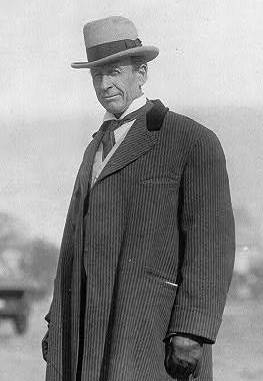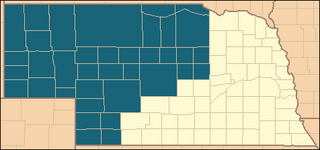Related Research Articles

Irrigation is the practice of applying controlled amounts of water to land to help grow crops, landscape plants, and lawns. Irrigation has been a key aspect of agriculture for over 5,000 years and has been developed by many cultures around the world. Irrigation helps to grow crops, maintain landscapes, and revegetate disturbed soils in dry areas and during times of below-average rainfall. In addition to these uses, irrigation is also employed to protect crops from frost, suppress weed growth in grain fields, and prevent soil consolidation. It is also used to cool livestock, reduce dust, dispose of sewage, and support mining operations. Drainage, which involves the removal of surface and sub-surface water from a given location, is often studied in conjunction with irrigation.

The Homestead Acts were several laws in the United States by which an applicant could acquire ownership of government land or the public domain, typically called a homestead. In all, more than 160 million acres of public land, or nearly 10 percent of the total area of the United States, was given away free to 1.6 million homesteaders; most of the homesteads were west of the Mississippi River.

The Reclamation Act of 1902 is a United States federal law that funded irrigation projects for the arid lands of 20 states in the American West.

The California Water Wars were a series of political conflicts between the city of Los Angeles and farmers and ranchers in the Owens Valley of Eastern California over water rights.

The Bureau of Reclamation, formerly the United States Reclamation Service, is a federal agency under the U.S. Department of the Interior, which oversees water resource management, specifically as it applies to the oversight and operation of the diversion, delivery, and storage projects that it has built throughout the western United States for irrigation, water supply, and attendant hydroelectric power generation. It is currently the U.S.'s largest wholesaler of water, bringing water to more than 31 million people, and providing one in five Western farmers with irrigation water for 10 million acres of farmland, which produce 60% of the nation's vegetables and 25% of its fruits and nuts. The Bureau is also the second largest producer of hydroelectric power in the western U.S.

The Dominion Lands Act was an 1872 Canadian law that aimed to encourage the settlement of the Canadian Prairies and to help prevent the area being claimed by the United States. The Act was closely based on the U.S. Homestead Act of 1862, setting conditions in which the western lands could be settled and their natural resources developed.

The Flathead Indian Reservation, located in western Montana on the Flathead River, is home to the Bitterroot Salish, Kootenai, and Pend d'Oreilles tribes – also known as the Confederated Salish and Kootenai Tribes of the Flathead Nation. The reservation was created through the July 16, 1855, Treaty of Hellgate.

Elephant Butte Dam or Elephant Butte Dike, originally Engle Dam, is a concrete gravity dam on the Rio Grande near Truth or Consequences, New Mexico. The dam impounds Elephant Butte Reservoir, which is used mainly for agriculture but also provides for recreation, hydroelectricity, and flood and sediment control. The construction of the dam has reduced the flow of the Rio Grande to a small stream for most of the year, with water being released only during the summer irrigation season or during times of exceptionally heavy snow melt.

The Great Sioux Reservation initially set aside land west of the Missouri River in South Dakota and Nebraska for the use of the Lakota Sioux, who had dominated this territory. The reservation was established in the Fort Laramie Treaty of 1868. It included all of present-day western South Dakota and modern Boyd County, Nebraska. This area was established by the United States as a reservation for the Teton Sioux, also known as the Lakota: the seven western bands of the "Seven Council Fires".
The Carey Act of 1894 allowed private companies in the U.S. to erect irrigation systems in the western semi-arid states, and profit from the sales of water. The Carey Act was enacted into law by Congress by the Act of August 18, 1894, as amended. It was a new approach for the disposal of public desert land, as the federal government decided this task was too large for individual settlers. Through advertising, these companies attracted farmers to the many states which successfully utilized the act, notably Idaho and Wyoming.

Moses Pierce Kinkaid was an American politician who was a member of the United States House of Representatives from the state of Nebraska. He was the sponsor of the 1904 Kinkaid Land Act, which allowed homesteaders to claim up to 640 acres (260 ha) of government land in western Nebraska.

The Kinkaid Act of 1904 is a U.S. statute that amended the 1862 Homestead Act so that one section of public domain land could be acquired free of charge, apart from a modest filing fee. It applied specifically to 37 counties in northwest Nebraska, in the general area of the Nebraska Sandhills. The act was introduced by Moses Kinkaid, Nebraska's 6th congressional district representative, was signed into law by President Theodore Roosevelt on April 28, 1904 and went into effect on June 28 of that year.

Checkerboarding refers to a situation where land ownership is intermingled between two or more owners, resulting in a checkerboard pattern. Checkerboarding is prevalent in the Western United States and Western Canada because of extensive use in railroad grants for western expansion, although it had its beginnings in the canal land grant era.

The Timber Culture Act was a follow-up act to the Homestead Act. The Timber Culture Act was passed by Congress in 1873. The act allowed homesteaders to get another 160 acres (65 ha) of land if they planted trees on one-fourth of the land, because the land was "almost one entire plain of grass, which is and ever must be useless to cultivating man."
Rancho Bosquejo was a 22,206-acre (89.86 km2) Mexican land grant in present-day Tehama County, California given in 1844 by Governor Manuel Micheltorena to Peter Lassen. The name means "Wooded Ranch" in Spanish. The grant extended along the east bank of the Sacramento River south of Rancho Rio de los Molinos and Toomes Creek, and encompassed present day Vina on Deer Creek.
Agriculture in Namibia contributes around 5% of the national Gross Domestic Product though 25% to 40% of Namibians depend on subsistence agriculture and herding. Primary products included livestock and meat products, crop farming and forestry. Only 2% of Namibia's land receives sufficient rainfall to grow crops. As all inland rivers are ephemeral, irrigation is only possible in the valleys of the border rivers Oranje, Kunene, and Okavango, and also at the Hardap Irrigation Scheme.

The Palo Verde Valley is located in the Lower Colorado River Valley, next to the eastern border of Southern California with Arizona, United States. It is located on the Colorado Desert within the Sonoran Desert south of the Parker Valley. Most of the valley is in Riverside County, with the southern remainder in Imperial County. La Paz County borders to the east on the Colorado River.
Preemption was a term used in the nineteenth century to refer to a settler's right to purchase public land at a federally set minimum price; it was a right of first refusal. Usually this was conferred to male heads of households who developed the property into a farm. If he was a citizen or was taking steps to become one and he and his family developed the land he had the right to then buy that land for the minimum price. Land was otherwise sold through auction, typically at a price too high for these settlers. Preemption is similar to squatter's rights and mining claims.

Report on the Lands of the Arid Region of the United States is a scientific report and policy recommendation written by American explorer, geologist, and anthropologist John Wesley Powell, and first published in 1878. The work sought to create an equitable and sustainable method for developing the arid region of the United States, an area characterized by its low annual rain that encompasses 40% of the continental portion of the country.

George Hebard Maxwell was an American attorney and lobbyist for water reclamation and communal irrigation projects. In 1899, he formed the National Reclamation Association and, in 1902, along with Democratic U.S. Representative Francis G. Newlands, helped pass the National Reclamation Act.
References
- ↑ "Bureau of Land Management" (PDF). Retrieved 29 November 2017.
- ↑ Gates 1978, p. 11.
- 1 2 Ganoe, John T. (1937). "The Desert Land Act in Operation, 1877-1891". Agricultural History. 11 (2): 142–157. JSTOR 3739672.
- ↑ Ostrom, Elinor (2011). "Reflections on "Some Unsettled Problems of Irrigation"". The American Economic Review. 101 (1): 49–63. JSTOR 41038781.
- ↑ Gates, Paul W. (1978). Land Policies in Kern County. Bakersfield, CA: Kern County Historical Society. OCLC 5154193.
- 1 2 3 4 5 6 Landstrom, Karl S. (1954). "Reclamation under the Desert-Land Act". Journal of Farm Economics. 36 (3): 500–508. doi:10.2307/1233016. JSTOR 1233016.
- ↑ "43 U.S. Code § 327 – Filing irrigation plan; association of entrymen". LII / Legal Information Institute. Retrieved 2017-11-30.

